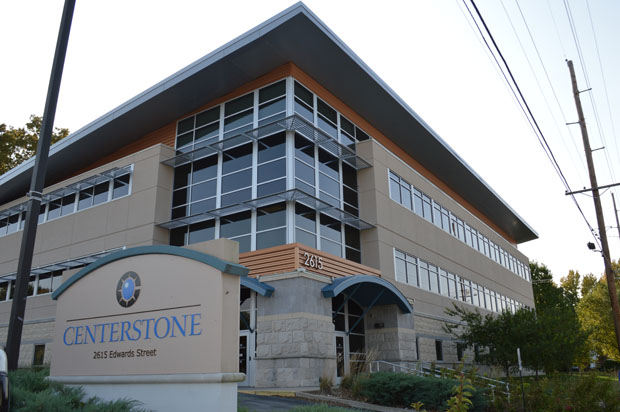Home /
Why the Presence of a Parent/Caregiver/Attachment Figure is Essential to a Child’s Treatment

By Cindy Paauw, LCSW
It is rarely ever a child’s idea to go to therapy and talk to a “stranger” (in their eyes) about recent or current stressors or distressing events or any traumas that they have experienced. When a trauma, defined as a life-altering event has happened that may have impacted a child’s mental health, it is most likely someone else’s idea for a child to then meet with a therapist for further assessment. Whether it was the parent’s idea or a recommendation from another entity; another therapist/DCS (dept. of children’s services), or the child’s school, the initial meeting for a child in a therapist’s office can be a confusing and “scary” starting point. There is rarely ever a case for which I do not involve a child’s parent/legal guardian (no matter the age of a child) in the first initial appointment. Of course, continued involvement of a parent may vary depending on a child’s age (both chronological and developmental age), and therapeutic needs, in treating a child’s trauma, dyadic work (working with both children and parent present) and continued parental consultation throughout child’s treatment is essential for a child in their process of healing. Research supports that involving a safe attachment figure/caregiver in treatment increases the likelihood of positive lasting therapeutic change (NCTSN).
Setting the stage
In the initial appointment, it’s important to ask the child first, prior to the parent, for their understanding of why they are here today in your office. It is then that I ask for the child’s permission if I can ask their parent/guardian for anything they wanted to add/if they wanted to further help me (the therapist) understand why they are here today. Asking the child for permission for parent’s input gives them a sense that they are still in control, we are all here for one unified goal: to help the child and gain a better understanding of the child’s world. It is important for the therapist to use this first session in setting the stage that treatment will be a collaborative process involving both the child and parent and emphasizing that parental involvement throughout treatment is an essential ingredient to lasting change. At the first session, it is also important to address any barriers to treatment (scheduling difficulties, etc.) assessment of parent’s own personal beliefs about therapy and the therapeutic process, and assessment of need for additional resources and outside referrals that may benefit the child/parent/family during this time (parenting classes, case management, etc.). It is also important and crucial in this first step that the therapist assesses to see whether the parent/caregiver present, is in fact a “safe” person for the child, one who will be able to adequately hold the space for the child as they are going through treatment. Of course, no one needs to be “perfect”, as it is both a learning and healing process for everyone involved, however clear red flags will certainly be ruled out, and another viable caregiver may be identified by the client at this time.
Caregivers as Co-regulators
During any trauma treatment, prior to “diving into deep waters”, a therapist will first assess for coping skills and building of coping/self-regulating tools that a child can readily access as treatment progresses. It is here that I find it important to recruit the help of a parent/caregiver to help with accountability; that the child is regularly practicing these skills, with the parent/caregiver present. A therapist may help a child and parent develop coping skills that they can use together in the face of distress. Attachment theory supports the claim that prior to a child being able to self-regulate and soothe their own nervous system, they must first know and internalize the notion that there is that safe, supportive other, can hold the space for them to begin self soothe. Children who have undergone trauma need to be assured that the presence of a caregiver that can “handle” their distress, is there and able to help them efficiently regulate and reclaim that sense of safety when they are feeling activated. The therapist will work one on one with a parent/caregiver to reinforce the idea that they need to be that calm, responsive, and unreactive co-regulator, that can help the child effectively move through their emotions. It is here that the therapist will further assess for parent’s own reactions/responses to trauma, and perhaps gain an understanding of a parent’s/caregiver’s own experience with trauma, and how this may impact how they respond. Further assessment for parent’s own need for their individual treatment may be identified here. It is important to emphasize that the parent/caregiver is here for the child, and that they are the ones who are there, as co-regulators, for the reminder 167 hours of the week, outside the hour they are spending in the therapy office. It is imperative that outside the time in the office, the child continues to practice skills learned in therapy with the caregiver’s help and presence.
Establishing Safety in and outside of the Therapy office
The presence of a safe, reliable, and responsive caregiver is an essential ingredient that is needed for a child to start and continue trauma processing. Effective co-regulation helps establish a sense of safety and security for a child; “I know that this person can handle when things get scary and confusing for me, that they are there to help me face the difficult things that have happened to me and remind me that it’s not my fault”. Positive therapeutic outcomes are strongly correlated with the presence of a safe attachment figure, who can help the child hold the space, inside and outside of the therapy room. Children who have experienced trauma often have a distorted view of the world or others as not being safe. The presence, responsiveness, and attunement of a parent/caregiver to the emotional needs of a child, can help reaffirm that they are not alone, thus reestablishing and reclaiming a sense of safety.


